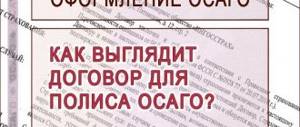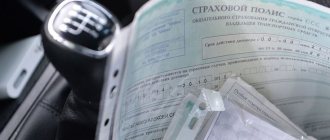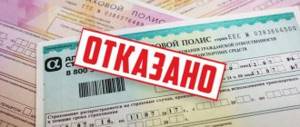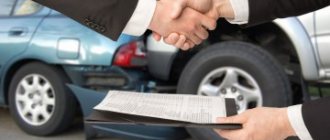Auto insurance has become an integral part of the life of any vehicle owner. But, unfortunately, more and more insurance companies are deliberately deceiving their clients by not paying them compensation for an insured event, or by making partial payments. We should talk further about what to do if you do not agree with the insurance payment under MTPL.
What to do if you don’t agree with the payment under OSAGO
In relations with an insurance company, it often happens that, having gone through the entire lengthy procedure of processing an insurance payment, the client waits until his damage is finally covered, but in the end he discovers with surprise and indignation that the amount paid is much less than expected. Similar situations happen everywhere and are not surprising. It’s unfortunate, but insurers are often ready to do anything just to deceive their clients and not pay them extra. You need to figure out what to do if you don’t agree with the payment under compulsory motor liability insurance.
First of all, you need to pay special attention to several key points. As a rule, the fact of underpayment is revealed when the victim in an accident discovers that he does not have enough money to carry out all the repair work, or the amount of compensation does not correspond to the examination data. If you are faced with a similar problem, then you need to understand how much you were underpaid. To do this, you need to contact the insurance company and request a copy of the assessment report on the basis of which payments were made. In most cases, insurers try to find any excuse not to show documents to the client. But there is a small nuance here: if there is an MTPL insurance policy, the client has the right to familiarize himself with the documentation, and the refusal of the insurers is an offense.
In any case, it will be much easier to contact an independent expert and conduct an additional assessment of the damage received by the car as a result of an accident. This will help you verify that the insurance company has underpaid you and will give you the opportunity to understand the extent of the underpayment. Immediately after you have the expert conclusions in your hands, you need to find a qualified lawyer and turn to him for help. Automotive lawyers will help you recover the entire missing amount of money from insurers, and thereby protect you.
Important! Remember not to rush too much. Initially, the insurance company must assess the damage to your car. And only then will this right pass to the owner of the car. If the examination is carried out before the insurers, it may be declared invalid, and its results will not be taken into account in the trial.
As practice shows, if there is disagreement regarding the amount of loss, insurers always voluntarily refuse to pay the full amount of compensation. Therefore, this cannot be done without the participation of the courts. If the amount of underpayment is up to 20 thousand rubles, then going to court may not be justified. Your costs may significantly exceed the amount of the underpayment. Just conducting an independent examination will cost at least 5-10 thousand rubles, and there are also various court costs, state fees and lawyer fees.
But if the amount of underpayment exceeds the mark of 20 thousand rubles, then in this case a trip to court is necessary. Often, insurers take advantage of this moment and do not pay their clients insignificant amounts in order to discourage the latter from going to court.
Let's imagine a situation in which the client does not agree with the payment under compulsory motor liability insurance. What to do if the property was purchased on credit or lease? The main condition for issuing a bank loan is insurance of property, as well as the life and health of the lender. In the case of purchasing a car in installments, you will need to take out a CASCO policy. As practice shows, even despite the presence of insurance policies, insurers often try to deceive their clients. It is worth examining several situations that occur most often in practice.
- The buyer purchased the car in installments and took out a CASCO insurance policy for it. Everything was going great, the client repaid his debt on time, but one not very good day his car got into an accident and could not be repaired, or the car was simply stolen. And in such a situation, the insurance company will have to pay off the entire debt of its client. But what most often happens is that insurers repay only that part of the loan that has not yet been paid to the bank, completely excluding from the calculations those amounts of money that have already been paid by the client.
- When participating in a loan program, the lender is required to insure the collateral. There is a small nuance in this situation. It is necessary to take out insurance not for the entire loan period, but only for a year. Otherwise, you may encounter a problem when the insurance company deducts the amount of the insurance premium from the compensation for the duration of the policy, and the remaining compensation may not be enough to pay the loan, not to mention anything else.
When insuring collateral, the main beneficiary becomes the bank that issued the loan. Therefore, in order to defend your interests in the event of unforeseen situations, you need to look for a lawyer who specializes in resolving such issues and has significant experience in dealing with insurance disputes.
The insurance company underestimated payments in case of total loss of the car
You can often encounter situations of this nature. Your car received serious damage as a result of an accident, and the insurance company considered that the car was no longer repairable, that is, there was a complete loss of the insured property. It is immediately worth noting that there is no unified system for assessing damage in such a situation, and different companies use different calculation mechanisms. Some consider a vehicle that has received 70% damage to be beyond repair, but for some companies this figure is 80%.
If you agree with the insurance company’s conclusion that the car is no longer usable, then you have the right to refuse the usable remains of the car in favor of insurance compensation, and in return you will receive a full insurance payment excluding depreciation, if it is provided for in the agreement. If you decide to keep the remains of the car for yourself, then in this case you will be faced with the fact that insurers will significantly inflate the cost of usable remains, and your insurance compensation will be significantly reduced. Naturally, in such a situation, the car owner does not agree with the payment under compulsory motor liability insurance, and will prefer to act through the court with the help of a qualified lawyer.
There is another situation. Upon careful study of the case, you understand that the damage received does not allow insurers to recognize the car as beyond repair. Often, the insurance company deliberately delays the inspection data until it recognizes the total loss of the car, and this is quite understandable, because repairing the vehicle can cost a huge amount. At the same time, in order to reduce the cost of payments, insurers additionally lower the price of suitable balances, and as a result, the amount of compensation is small. It is quite natural that in such a situation the owner of the vehicle does not agree with the amount of payment under compulsory motor liability insurance. And in order to resolve this conflict, he needs to enlist the support of a qualified lawyer and go to court.
Important! Remember that the decision to keep the usable remains of the car is made solely by the owner of the vehicle. Therefore, despite the arguments of the insurers, the choice has to be made by you.
Audit from an auto expert
First of all, you need to be sure that the insurer really changed the amount of compensation in its favor. It is necessary to review the results of the audit conducted by the technical specialist. Of course, insurance organizations share the results of the audit without much desire. However, it is stated at the legislative level that all policyholders must be able to obtain information from the document described above.
When you receive a duplicate of the examination results, compare the amount assigned in it with the amount of compensation payments that you received. If there is a difference, there is also a reason to file a claim with the insurer.
If there is no difference, there are two options:
- Calculate the amount of compensation sufficient.
- Request another inspection.
Carrying out a repeat inspection is relevant only if the insurer pays money, and, of course, after the same examination has been carried out. If you are not satisfied with the amount of compensation, this is not a reason to refuse to spend this money. The use of reimbursement is possible, since the claim will be filed on the subject of the lost amount.
Thus, you have the results of the examination in your hands. Based on the information provided therein, the insurance company did not pay you enough. Hurrying up and filing a lawsuit in court is not the only way out of the situation. To begin with, we recommend that you make an attempt to resolve the issue out of court.
Pre-trial claim
By and large, the issue is resolved without the intervention of the courts “to calm things down.” If the insurer has made a decision regarding the amount of payments, it is unlikely that the policyholder will be able to influence his decision.
Since 2014, filing a claim in court is allowed only after an attempt to resolve the issue peacefully. The filing of a pre-trial claim must be made within twenty days from the expiration of the period during which the insurer must pay compensation for damage. If the policyholder fails to meet the deadline, this will be considered a violation of the pre-trial process.
You can submit a claim to the insurer either independently or by registered mail with notification. The claim is made in the amount of two pieces.
What should be included in the claim:
- Information about the parties to the insurance contract, the place and time of its preparation.
- Information about the policyholder: full name, place of registration, bank account information, contact information.
- Subject of the claim. You need to carefully describe the problem that has arisen: describe the insured event, mention the amount of the insurance payment, describe the results of the inspection from the expert, and the like.
- Justification for the amount of payments.
- Description of the essence of the requirements indicating the time for their implementation.
- Notification of your next actions. Do not forget to write that if you refuse to comply with your requirements, you will be forced to seek help from the courts, in which case the insurer will also be forced to bear additional costs associated with litigation.
In some cases, a pre-trial claim may be sufficient to obtain the full amount of compensation, since quite often a positive decision is made regarding the insured, and not the insurer. However, there are also insurers who are not averse to fighting with the insured in court. If the second case is relevant for you, feel free to contact the courts.
How to go to court
If pre-trial claims did not have any effect on the insurance company, find a lawyer who works in this area. Of course, no one forbids you to speak in court yourself. However, even if you believe that the truth is on your side, speaking out on your own is simply futile. If a positive decision is made regarding you in court, all expenses for a lawyer go to the policyholder.
A lawyer will assist in drawing up a claim, complying with all procedural requirements, and help collect the necessary documentation.
In addition to the statement of claim, you must submit a certain list of documentation presented below:
- pre-trial claim;
- written refusal from the insurer;
- bank account statement with information about compensation payments;
- results of vehicle inspection, etc.
In addition to these documents, a standard package is also provided: vehicle passport, driver’s license, insurance, etc. If, after the first visit to court, the insurance company still refuses to provide additional payment for the missing funds, a repeat inspection is scheduled. The results of this check become the main factor regarding the decision made by the court.
Let's imagine the situation again, how much the insurer will have to part with if the policyholder wins in court. For ease of understanding, almost all of the numbers shown will default to the amount of money in rubles.
The insurer paid the policyholder 10,000. The total amount required for transfer is 25,000. Therefore, the insurer must pay another 15,000. Penalties for non-payment are 50 percent of the final amount - 7,500. We should not forget about the penalty for late payment, for a month will run up 4,500. As a result, the policyholder receives 37,000, and this does not take into account the costs of the plaintiff’s lawyer, various fees, and so on.
How does an insurance company underestimate the amount of payments under compulsory motor liability insurance?
Legislative regulations that regulate insurance disputes provide for both maximum amounts of compensation and those that are calculated taking into account the wear and tear of vehicle parts. However, this does not in any way prevent insurance companies from creating conditions under which they have the opportunity to significantly reduce the total amount of insurance compensation. This often happens like this:
- Insurers send the car for evaluation by an expert who is interested in the outcome of the case, and therefore gives incorrect information, thereby underestimating the amount needed to restore the car to operability. Initially, everything goes according to plan. Insurers agree to pay and send the car for inspection. It's only then that things start to get weird. First they pay you the amount, and then it turns out that it is not enough for repairs. In response to your complaints, they tell you that the amount was calculated taking into account the wear of parts, and recommend that you pay attention to cheaper analogues of spare parts;
- The insurance company claims that some of the damage is not related to this accident, and was received as a result of other collisions. The appraiser provides a real report on the condition of the car. But you are faced with the fact that insurers are beginning to assure that the damage was not caused by an accident. There is also a situation in which money for the repair of a certain part is not awarded due to the fact that it allegedly has older damage. Of course, the owner of the car does not agree with the amount of payment under MTPL, but the insurance company exercises its right to reimburse the undisputed part of the insurance compensation (Article 63 of the MTPL Rules).
If the owner of the car does not agree with the payment under compulsory motor liability insurance, then he will initially have to carry out his own independent examination of the car. At the same time, it is necessary to do it even if you have already started repairing your car. However, in order not to initiate additional conflict situations with insurers, it is still recommended to carry out an examination before the start of repair and restoration work.
Delay in payment under compulsory motor liability insurance. Find out what to do when making corrections to the European protocol here.
You can find a sample of filling out the European protocol at the following link:
By law, an employee of the insurance company must be present at the expert assessment. Well, or at least, insurers should be notified of the date and place of the examination. This must be done in writing. Verbal notification will not be sufficient. The most ideal option is to send a registered letter with acknowledgment of receipt. Or, alternatively, you can personally give notice to the insurers. It just needs to be drawn up in two copies, and each of them must have the date of acceptance, your signature, and the seal of the insurance company along with the signature of an authorized person. One of the copies of the notification must be kept by the victim in the accident. When initiating legal proceedings, this paper will be needed as evidence that the insurers knew about the expert assessment at your insistence.
Procedure for insufficient payment
If the amount presented by the insurance company for compensation of expenses is significantly underestimated, the owner has every right to challenge it and achieve the actual amount of payments.
notifications about independent examinations free of charge in word format
You can do this using the following steps:
- send a notification to the insurance company about an event to conduct an independent examination, which will be carried out by another insurance company or a special expert,
- an independent expert must establish the damage to the vehicle damaged in the accident, assess the degree of loss of its marketable value and provide the result in writing,
- a copy of the examination, together with the pre-trial claim, is sent to the insurance company to review the amount of compensation with the requirement that the amount corresponds to covering all expenses.
ATTENTION! View the completed sample notification of an independent examination:
If there is no response from the insurer, the next step is to file a lawsuit.
In turn, the court can make three decisions:
- satisfaction of the claim,
- appointment of a forensic examination,
- dismissal of the claim.
If the court makes a satisfactory decision on the claim, a corresponding letter is sent to the Investigative Committee, which clearly states the amount of compensation and the terms for its payment, established by the court.
Note! With a well-drafted claim, you can win not only the missing funds to compensate for damage to the vehicle, but also moral compensation, which reaches 50% of the total amount.
What to do if the insurance company has underestimated the payment under compulsory motor liability insurance?
If you are faced with the fact that the insurance company has underestimated your insurance compensation, then there is only one way to solve this problem - through legal proceedings. However, this must be done only after you have evidentiary documents in your hands, in particular the original and a copy of the independent expert’s assessment, a copy of the insurance act, data on the notification of insurers about the examination and payment documents for all necessary work.
Often, the insurance company cuts payments not in isolated cases, but en masse, hoping that many car owners simply will not argue and get involved in a legal conflict. Therefore, in addition to filing a claim in court, it is also necessary to write a complaint to the Russian Union of Auto Insurers and the Federal Financial Markets Service. If you doubt the success of the upcoming lawsuit, then only a qualified and experienced car lawyer can help you restore peace of mind. He will help you get to the truth and will do everything possible to hold the insurance company accountable while protecting your interests.
To understand the problem, you first need to determine what is considered an understatement of the amount of insurance payments. Based on current legislative standards, the amount of insurance compensation is 120 thousand rubles (for contracts concluded before October 1, 2014) and 400 thousand rubles for all agreements executed after this period. In this case, the amount of insurance compensation may take into account wear and tear of parts and the marketable condition of the vehicle.
Independent experts cooperating with insurers are independent in name only. They often have an interest in the results of the inspection, and therefore, without hesitation, they underestimate the cost of damage, do not take into account small details and exclude some repair work. All this together adds up to a significant amount. Statistics show that often the amount of underpayment can range from 50 to 90% of the total insured amount.
Remember that a reduction in payments under compulsory motor liability insurance is grounds for a lawsuit. And if you do not agree with the amount that the insurance company has charged you, do not waste time, but try to find a good auto lawyer who can protect your interests and hold insurers accountable.
How long will it take for the financial ombudsman to consider the appeal?
The Financial Ombudsman considers the appeal and makes a decision on it within the following time frames:
- within 15 working days from the day following the day the application was sent to him - in the case of sending an application by a consumer of financial services;
- within 30 working days from the day following the day the application was transferred to him - in the case of sending the application by a person to whom the right of claim of a financial services consumer against a financial organization has been assigned.
If an independent examination is required on the subject of the dispute, the examination is suspended for the duration of the examination, but for no more than 10 working days.










